Critics and supporters of California's proposed high-speed rail system faced off Tuesday in Palo Alto over a $98.5 billion question: Is the voter-approved project a desperately needed job engine or an out-of-control boondoggle that needs to be stopped?
Both sides came out in full force Tuesday to watch top officials from the California High-Speed Rail Authority, legislative analysts and leading rail advocates and critics testify about the rail authority's latest plans for the rail line. More than 200 people, including dozens of union workers and community activists, crammed into the Council Chambers for the afternoon hearing, filling every bench and foldout chair and spreading out against the chambers wall.
The hearing centered on the rail authority's newly released business plan, a document that showed the rail system's price tag spike from an initial estimate of about $33 billion in 2008 to $98.5 billion. The document attributes the sharp cost increase to new design elements such as tunnels and aerial viaducts, inflation adjustments and an increase in development over the past decade, which made purchases of land more expensive.
The new business plan, while generally seen as an improvement over the rail authority's 2009 effort, has prompted a fresh set of concerns from city officials, state legislators, rail watchdogs, nonpartisan analysts -- all of whom were represented at Tuesday's hearing. Farra Bracht, principal analyst at the Legislative Analyst's Office, said her office has several major concerns about the new business plan. Chief among them: Where will the money come from?
"The funding available now would only complete the initial construction segment," Bracht testified. "That leaves a lot of questions about where funding would come from to complete the rest of the project."
Bracht also called the business plan out for failing to analyze a number of possible impacts of the rail line, including jobs and economic activity that would be lost because of businesses that would have to be displaced by the new line and increased congestion near station locations.
William Kempton, who chairs a peer-review group that vets the rail authority's reports, was more optimistic about the business plan, which he called "a reasonable approach to proceeding in a way that will allow high-speed rail to be implemented segmentally or incrementally into the future.
"I think the plan does lay out a reasonable, logical sequencing approach and makes a very good case for segmented construction," Kempton said.
But even he voiced some concerns about the latest plans, particularly the extension of the timeline from 2020 to 2033. He said his committee would continue to evaluate the rail authority's revenue and ridership numbers, a subject of major dispute among transportation experts. Kempton also said inadequate staffing remains a problem at the rail authority -- an issue that he said needs to be addressed for the project to succeed.
Rail officials maintained Tuesday that the rail line would achieve operating profit and that it would attract investment after the initial segment is built. Rail authority CEO Roelof van Ark also defended the rail authority's decision to build its first segment in the Central Valley, between north of Fresno and north of Bakersfield.
The authority's phased approach calls for paying for this segment entirely with public funds and then soliciting private investment for future expansions of the line. Dan Richard, a newly appointed member of the authority's board of directors, said the second phase would entail stretching the line either north, from Bakersfield to San Jose, or south, from Merced to San Fernando Valley.
The rail authority is banking on getting most of the funding for the line from the federal government. The federal money would be matched by funds from the $9.95 bond state voters approved in 2008 for the project. The rail authority also anticipates local contributions and about $11 billion in private investments, which it anticipates receiving after the first segment is built.
"What that initial operating segment would do is trigger the build-out of the rest of the high-speed-rail system both by establishing ridership and bringing in further investment to help build out further segments," Richard said.
The Tuesday hearing was organized by Assemblyman Rich Gordon, D-Menlo Park, who chairs a budget subcommittee focused on transportation spending. Gordon was also one of three Midpeninsula lawmakers -- along with state Sen. Joe Simitian, D-Palo Alto, and U.S. Rep. Anna Eshoo, D-Palo Alto -- to call for a blending of high-speed rail and Caltrain on the Peninsula, a proposal that the rail authority largely embraces in its new business plan.
The meeting was a rare public visit for top rail officials to a city that has gradually emerged as a leading critic of the rail project. The Palo Alto City Council, which in 2008 urged voters to support the bond measure, last year took a position of "no confidence" in the rail authority. On Monday night, the council began considering an official request for legislators to either kill the project or bring it back to the voters.
Palo Alto had also joined its neighbors Menlo Park and Atherton and a coalition of nonprofit groups in filing a lawsuit against the rail authority, forcing the agency to revise parts of its environmental analysis. Another lawsuit against the agency was filed this week by two residents of Kings County in Central Valley. The plaintiffs, John Tos and Aaron Fukada, claimed the rail authority violated the terms of the 2008 bond measure by beginning construction in Central Valley.
Michael Rossi, who along with Richard was recently appointed to the rail authority's board of directors, defended the business plan and its finding that the rail system would operate under a profit.
"The finances in the plan are documented, they are transparent, they are current and they are public," Rossi said. "We have a plan that justifies the statement that this is an operating-profit organization and I'm pleased to have that discussion with anybody, anytime."
Many were skeptical. Jessica Zenk, transportation policy director for the Silicon Valley Leadership Council, said her group is now reconsidering its earlier support for the project because of all the recent changes.
Elizabeth Alexis, co-founder of the Palo Alto group Californians Advocating Responsible Rail Design, said the new business plan is an improvement of the previous version but called the new document a "very risky plan." Alexis, whose group was the first to point out flaws in the rail authority's ridership methodology, urged the agency to take its time and to come up with a more realistic ridership model.
"You need another year to gather data, you need another ridership model," Alexis told the rail officials.
Rail authority CEO Roelof Van Ark said the new business plan is based on fair, reasonable and conservative assumptions. He also defended the rail authority's decision to build its first segment in the Central Valley, between north of Fresno and north of Bakersfield. The decision had led some state legislators and U.S. Congressmen to dub the proposed system a "train to nowhere."
"This is the way the experts in the rest of the world have implemented the high-speed rail systems in other countries," van Ark said, referring to the agency's decision to start construction at the center of the line.
Labor leaders, meanwhile, remain steadfast in their support for the project, which the rail authority estimates will create 100,000 jobs during construction. As union workers crowded near the back of the Chambers in orange T-shirts, union officials talked about major projects such as the Transcontinental Railroad and Golden Gate Bridge, which were built, respectively, during the Great Recession and the Civil War.
Union workers also rallied outside City Hall just before the meeting, holding signs in support of the project, which the rail authority estimates will create 100,000 construction jobs.
Cesar Diaz, legislative director for State Building and Construction Trades, said the rail project is exactly what's the state needs at a time when so many construction workers, electricians, and other tradesmen are out of a job. Some parts of Central Valley, he said, are seeing the unemployment rate for those in the construction industry rise above 45 percent.
"We need high-speed rail, we need more efficient transportation, a cleaner environment and less dependence on foreign oil," Diaz said .
"Most of all, we need jobs," he concluded, earning an ovation from the union workers in the crowd.
While most proponents focused on job creation and improved transportation, many critics burrowed in on the details. Some said the rail authority's latest proposal does not comply with the requirements of the 2008 bond measure.
"The emperor still has no clothes," said David Schonbrunn, president of the Transportation Solutions Defense and Education Fund, one of the nonprofit groups participating in the suit against the rail authority. "They're clearly hoping that politicians will overlook the project's inconsistencies with Proposition 1A in their eagerness to do something to create jobs.
"We hope you won't succumb to this pressure."
Gordon, who chaired the meeting, called the hearing "an important first step in what will eventually lead to some key decisions that we will make on the future of high-speed rail in California." He said the legislature will work with the rail authority and Gov. Jerry Brown's administration over the next several months to determine what course to take with this project.
"Obviously, there are many issues to be explored as the Legislature moves toward any decision it reaches on financing," Gordon told the rail-authority officials at the meeting's conclusion. "But I'm hopeful that we can begin to work with you and with the Legislative Analyst's Office to further define some of those questions and get to greater clarity before the Legislature has to make the decision."

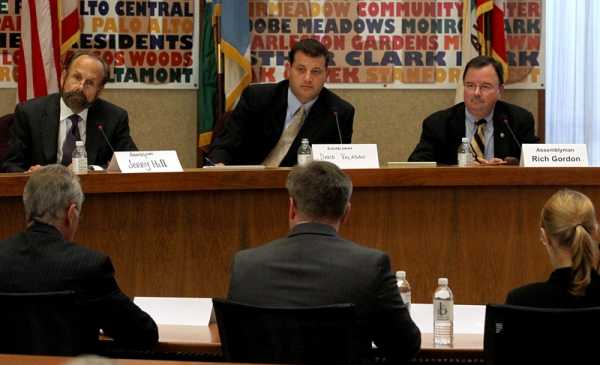
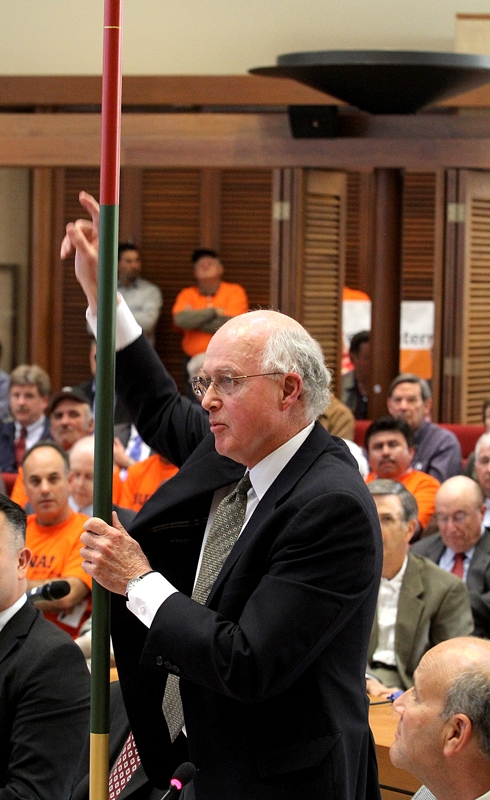
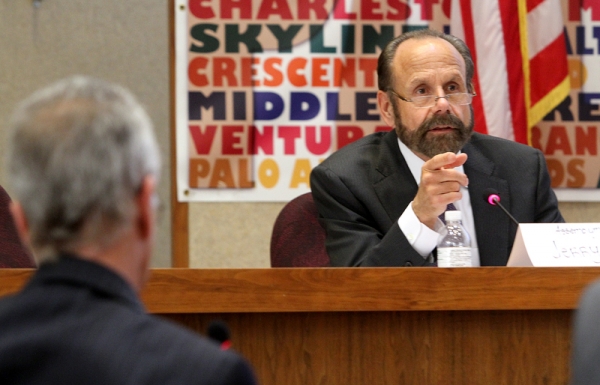
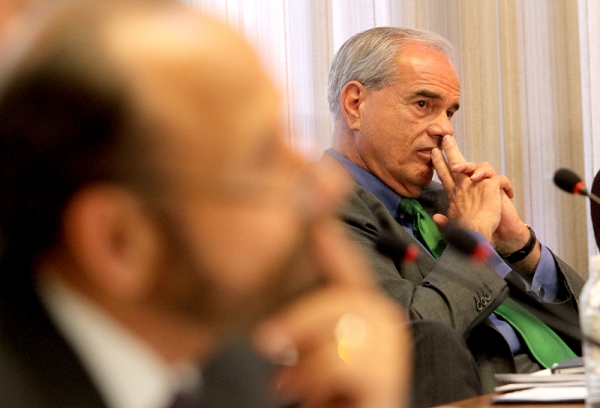
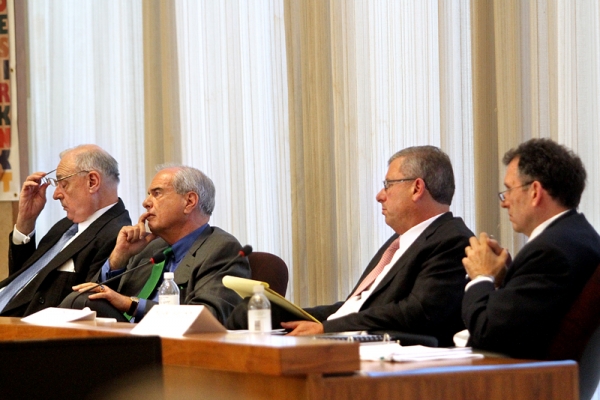

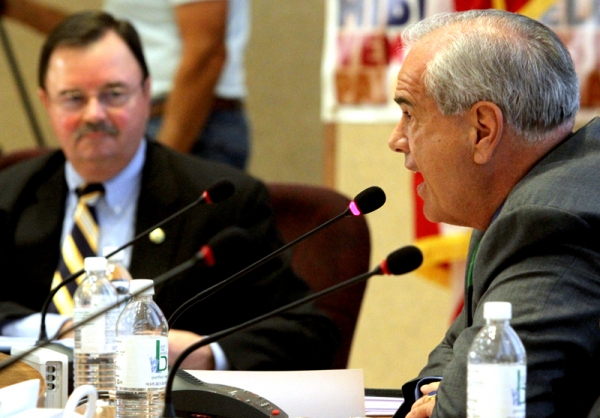
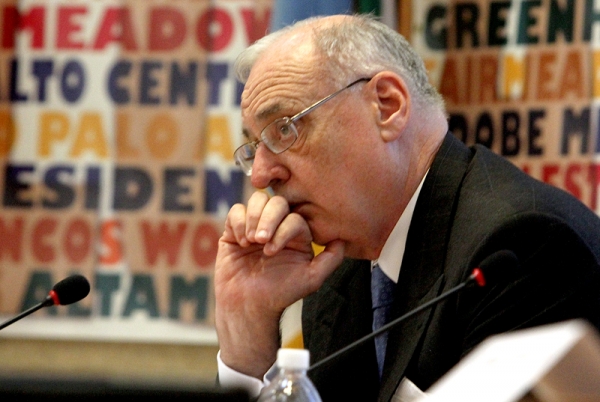
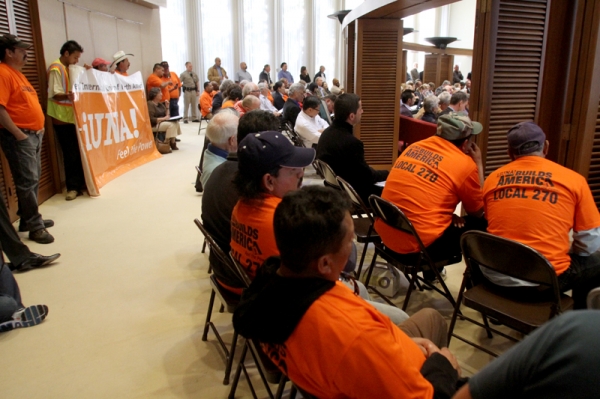
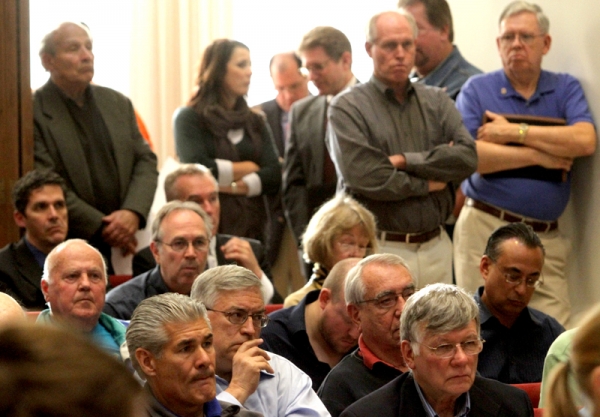


Comments
Jackson Park
on Nov 21, 2011 at 2:55 pm
on Nov 21, 2011 at 2:55 pm
"the Transcontinental Railroad and Golden Gate Bridge, which were built, respectively, during the Great Recession and the Civil War."
The transcontinental railroad was built since 2008 and the GGB was built 150 years ago?
St. Francis Acres
on Jun 6, 2017 at 9:33 am
on Jun 6, 2017 at 9:33 am
Due to repeated violations of our Terms of Use, comments from this poster are automatically removed. Why?